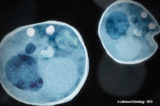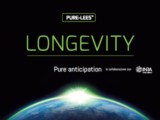
AN ORIGINAL AND NEW SPECIFIC INACTIVATED YEAST TO IMPROVE THE OXIDATIVE STABILITY OF WHITE AND ROSÉ WINES
In this paper we present research work carried out in collaboration with the University of Burgundy, which has
highlighted the impact of a new specific inactivated yeast developed for the protection of musts and wines
against oxidation.
This results from the application of an optimized production process to a unique strain of Saccharomyces cerevisiae
yeast to maximize the biosynthesis and accumulation of intracellular glutathione and other compounds
of interest.
Non-targeted metabolomic characterization has demonstrated the unique composition of the new inactivated
yeast and its impact on wine compared with other inactivated yeasts (standard and high glutathione content
inactivated yeast). In addition to its high content in reduced glutathione, the presence of other reducing peptides
further increases the positive impact of this specific inactivated yeast on the oxidative stability of wine.
Numerous application trials have been carried out, at pilot scale in particular, on white and rosé vinifications
during the 2017 and 2018 vintages, to evaluate the impact of this inactivated yeast on wine quality when
added before fermentation (after pressing, during clarification or in pre-fermentation cold storage). The results
show that early treatment with the specific inactivated yeast allows for better preservation of aromatic compounds
and color as well as increased radical-scavenging activity in wines up to bottling.
Glutastar final eng
Inoculating with yeast to acidify
A non-Saccharomyces yeast, Laktia, can naturally acidify white and red musts by converting a small amount of sugar into lactic acid at the start of alcoholic fermentation. This is a new way to acidify wine.
The article is published with the permission of La Vigne
TAP-ANG Levure

ESL 2019 : Biological tools in winemaking adapting to a changing environment
The proceedings from the 2019 Entretiens Scientifiques Lallemand held in Weisbaden Germany are now available. the 2019 international meeting focused on different strategies to overcome some of the issues related to climate change. From the vineyards with Lalvigne foliar sprays to managing acidity with non-Saccharomyces yeast, to nutrition and oxidation management. Special guests from the Geisenheim Institute , Prof Manfred Grossman and Prof J. Wendland presented the latest work from the Institute.
The Entretiens had the privilege of hosting Prof Monika Christmann from Geisenheim University and the OIV 1st Vice-President as the key note speaker.
ESL 2019 eversion
ESL 2018: Micobiological strategies to optimize wine regionality and personality
Proceedings of the XXVIIIth Entretiens Scientifiques Lallemand held in Blenheim, New Zealand focused on Sauvignon blanc and Pinot noir wine production. Topics presented included aroma profiles of Sauvignon blanc, yeast to help shape Sauvignon blanc styles and the challenges of Pinot noir wine. Master of Wine student, Ms Sarah Benson (Manchester, UK) presented her study ‘Creating Marlborough Sauvignon blanc in different styles, and assessing UK consumer and journalist preferences for these wines’.
ESL_Proceedings_2018

